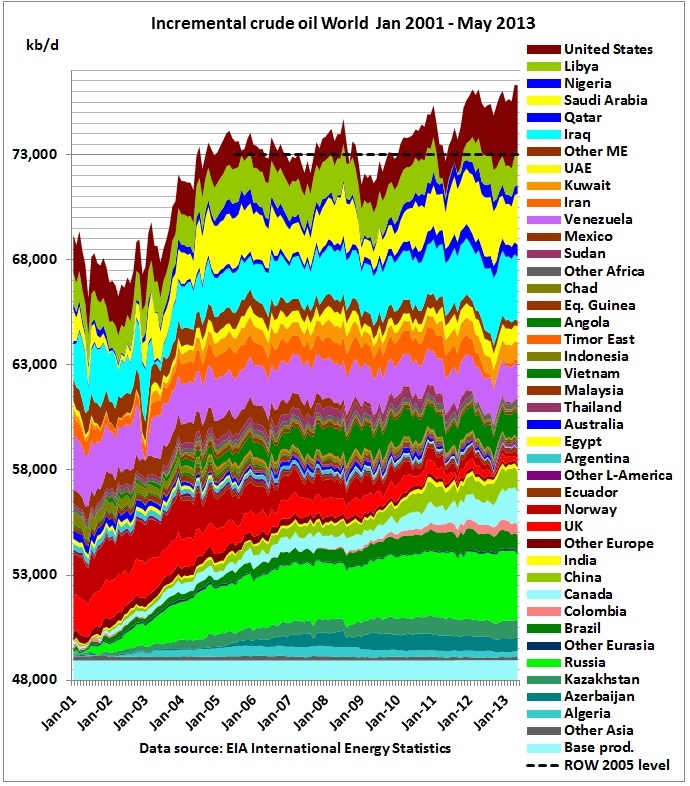Recent US shale oil growth sits on top of a bumpy production plateau of the rest-of-the-world (ROW).

Other Middle East (Syria, Yemen, Oman) was in long term decline until 2007. Just when Oman experienced a rebound, did production in Syria and Yemen collapse due to civil unrest which was at least in part caused by production having peaked in these countries. Iran’s production drop due to sanctions could not be offset by production gains in Iraq. Saudi production increased in response to Libya’s production losses. Despite production spikes, Saudi’s average crude production 2006-2013 was 450 kb/d lower than in 2005!
In full decline. Temporary drops are maintenance periods.
It seems to get ever harder to increase production. Azerbaijan has maxed out.
Africa has peaked.
Chinese crude production increased by just 1 mb/d over a long period of 12 years, basically offsetting steady decline in the rest of Asia.
Crude production in Brazil had a maximum in January 2012. Colombia has a hard time to increase production. Venezuela’s production remains on exactly the same plateau for several years, suggesting that the data may not be accurate.
While Mexico’s production has peaked, US shale oil and Canada’s syncrude from tar sands are increasing.
The world outside the US and the Middle East peaked in Jan 2011 at 40.9 mb/d , marked by the production drops during the Libya civil war. The world now depends on what will happen in the Middle East and when US shale oil will peak.
